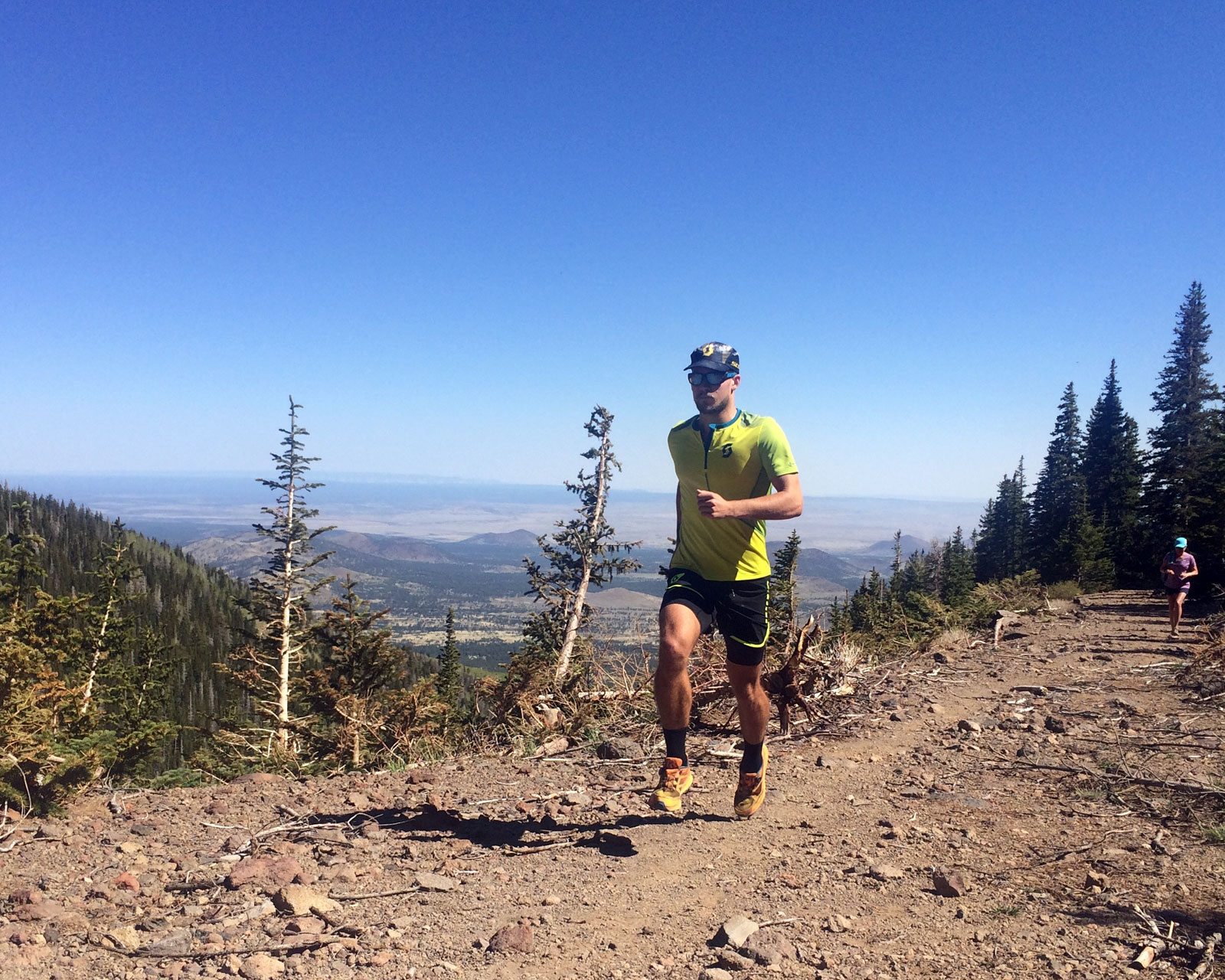The Local newsletter is your free, daily guide to life in Colorado. For locals, by locals.
Standing atop a 14,000-foot peak this summer, having nimbly navigated high alpine terrain in thin air, you’ll thank yourself for all the uphill battles with pavement, trail, and stairwell that you endured to get there. Mountain summits don’t come easy, but you can prepare yourself by improving your fitness and strength before your feet ever hit the path.
Ewen North, head coach at Revolution Running, a multisport training club for all levels of runners along Colorado’s Front Range, encourages hikers and runners to incorporate exercises with an incline as much as they can.

“Quite simply, running or walking uphill, whether you’re a beginner, seasoned veteran, or top level professional, is one of the most beneficial activities you will ever do to help improve your fitness,” North says. “It’s important that hikers wanting to summit 14ers do some preparation work as not only will it make the attempt more achievable, it will reduce the risk of injury.”
Prepare for an injury-free, summit-filled summer by incorporating the following workouts into your routine. You should aim to complete two to three workouts per week, and begin about five or more weeks before your next big uphill adventure.
Stair Repeats
Stair repeats, or running up stairs over and over again, may not sound fun, but they can improve your power and strength in quick, explosive bursts. This workout is especially useful for city dwellers who can’t regularly get to the mountains or foothills. Find a stairwell of at least five stories, and spend five to 10 minutes walking or lightly jogging before and after.
- For the out-of-shape individual: Walk powerfully up at least five flights of stairs, then return to the lowest floor via the elevator. Repeat six to eight times. Progress to more flights of stairs if possible, or increase the repeats to as many as 10.
- For the average Jane or Joe: Do the same as above but incorporate running as your fitness progresses. Start by running every third or fourth repeat but try to run as many as every other repeat as you progress.
- For the exceptional athlete: Run five or more flights of stairs eight times, taking the elevator back to the bottom floor after each repetition. Increase the pace as you progress, or do as many as 12 repeats.
 Swing your arms and drive your knees on steep inclines.
Swing your arms and drive your knees on steep inclines.
Short Hill Repeats
Repeatedly walking or running up an incline for a short period of time, and at a high effort, will teach you to navigate climbs smoothly and efficiently. “Going uphill makes the body operate at a harder level because you’re going against gravity,” North explains. “Doing this regularly allows the body to respond to the stimulus being applied. Over time, fitness is developed.” To perform this workout, find a 400-meter uphill section of trail or road. Begin and end the workout with 10 to 15 minutes of walking or easy running.
- For the out-of-shape individual: Walk briskly uphill for 30 seconds. Catch your breath as you walk back down the hill. Repeat 10 times. As fitness improves, increase your speed and extend the uphill interval to 60 seconds.
- For the average Jane or Joe: Walk as briskly as possible for 60 seconds and walk back down to your starting point. Repeat 10 times. As the weeks progress, begin to run every other repeat, and extend the repeats up to two minutes.
- For the exceptional athlete: Run uphill for 90 seconds, then walk or jog back to your starting point. Repeat 10 times. Extend the uphill interval up to three minutes. Think about pumping your arms and driving your knees forward for maximum benefit.
 Power hike steep sections by using your hands to push off your knees.
Power hike steep sections by using your hands to push off your knees.
The Long Uphill
Long, continuous uphill efforts teach you to get into a rhythm and improve your uphill capacity. “Regularly incorporating lengthy hill walks or runs will get the muscles and connective tissue used to the action of going uphill. The increased cardiovascular fitness will also help enormously as the air gets thinner,” North says. Find an uphill trail or paved road that continues upward for at least three miles at a moderate grade. When preparing for a 14er, execute your long uphill workout by summiting a smaller, more accessible mountain in the foothills, like Green Mountain in Boulder or the White Ranch Open Space Park’s high points in Golden. Warm up before, and cool down after, your long uphill effort, with 15–20 minutes of easy jogging or walking.
- For the out-of-shape individual: Aim for 30 minutes of continuous uphill walking and progress to 60 minutes as fitness improves. Take breaks when your breathing becomes too laborious.
- For the average Jane or Joe: Begin with a 45-minute uphill walk and progress to 75 minutes. As fitness improves, add one to two minutes of running for every five minutes of walking.
- For the exceptional athlete: Begin with 60 minutes of continuous uphill exercise and alternate between walking and running. Use your breathing as a guide: Walk if you’re gasping for breath, run when your breathing is under control. Progress to 90 minutes and incorporate as much running as possible.?








